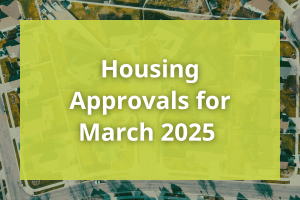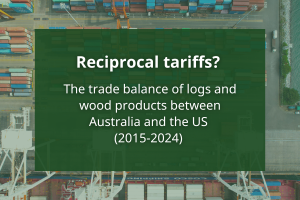Australia’s residential dwelling approvals continued to grow in May 2015. For the year-ended May, total approvals were 215,415, up 13.1% from 188,075 for the year ended May 2014. Analysis of the monthly data makes it plain that new ‘year-end’ records will continue to be set over coming months. Growth continues to be driven by larger blocks of apartments, while free-standing dwelling approvals remain stable and consistent.
The chart below shows Australia’s residential dwelling approvals, with the green line displaying the growing total of approvals and the red line showing the stability – and the early evidence of what could be a decline – in approvals of free-standing dwellings.

For further details, go to the FWPA Data Dashboard.
For the year ended May 2015, free-standing dwelling approvals (we know them as houses) increased 7.2% compared with the year ended May 2014. At 9,764 approvals for the month of May, approvals were 7.1% lower than the 10,508 approvals recorded in May 2014. The market will be watching approvals closely over the coming months, to detect whether potential softening in free-standing dwelling approvals materialises.
There is no similar concern – though obviously there is continual interest – when it comes to apartments, especially those of four or more storeys. They continue to dominate growth in domestic dwelling approvals, having grown a very significant 31.9% for the year to the end of May 2015, compared with the prior corresponding period. With total year-end approvals recorded at 48,083 for apartments of four or more storeys, these rapidly growing approvals are closing in on half those of free-standing dwellings.
Regardless of their constitution, Australia’s significant growth in dwelling approvals is not consistent among the States, as depicted in the chart below. The details show that approvals in Victoria grew 25.3% for the year ended May 2015, reaching 66,976 separate approvals, accounting for 28% of the national total.

For further details, go to the FWPA Data Dashboard.
Other states have also experienced growth over the same period, but none so significant as that for Victoria. State-by-State approvals are detailed in the table below.
| State | YE May 2014 | YE May 2015 | YoY % Change |
| NSW | 51,786 | 56,881 | +9.8 |
| Victoria | 53,457 | 66,978 | +25.3 |
| Queensland | 36,947 | 42,297 | +14.5 |
| SA | 11,005 | 10,954 | -0.5 |
| WA | 30,144 | 31,769 | +5.4 |
| Tasmania | 2,084 | 2,849 | +36.7 |
| NT | 2,125 | 1,822 | -14.3 |
| ACT | 4,690 | 3,897 | -16.9 |
The residential dwelling approvals data is among that unique body of data. It tells no lies because it is a simple aggregation. But its simplicity means this data does not tell a full story. That is the place of analysis.
At this point in the housing cycle, new analysis seems called for. Questions that arise include whether housing approvals are peaking and regardless, are apartment developments and approvals going to overtake free-standing dwellings? If so, when will that occur and if it does, what are the implications for the supply of wood and wood products?
The base housing data provides the prompts for more detailed industry analysis, at a pre-competitive level and at an even more detailed business level, as a key input to strategy.



